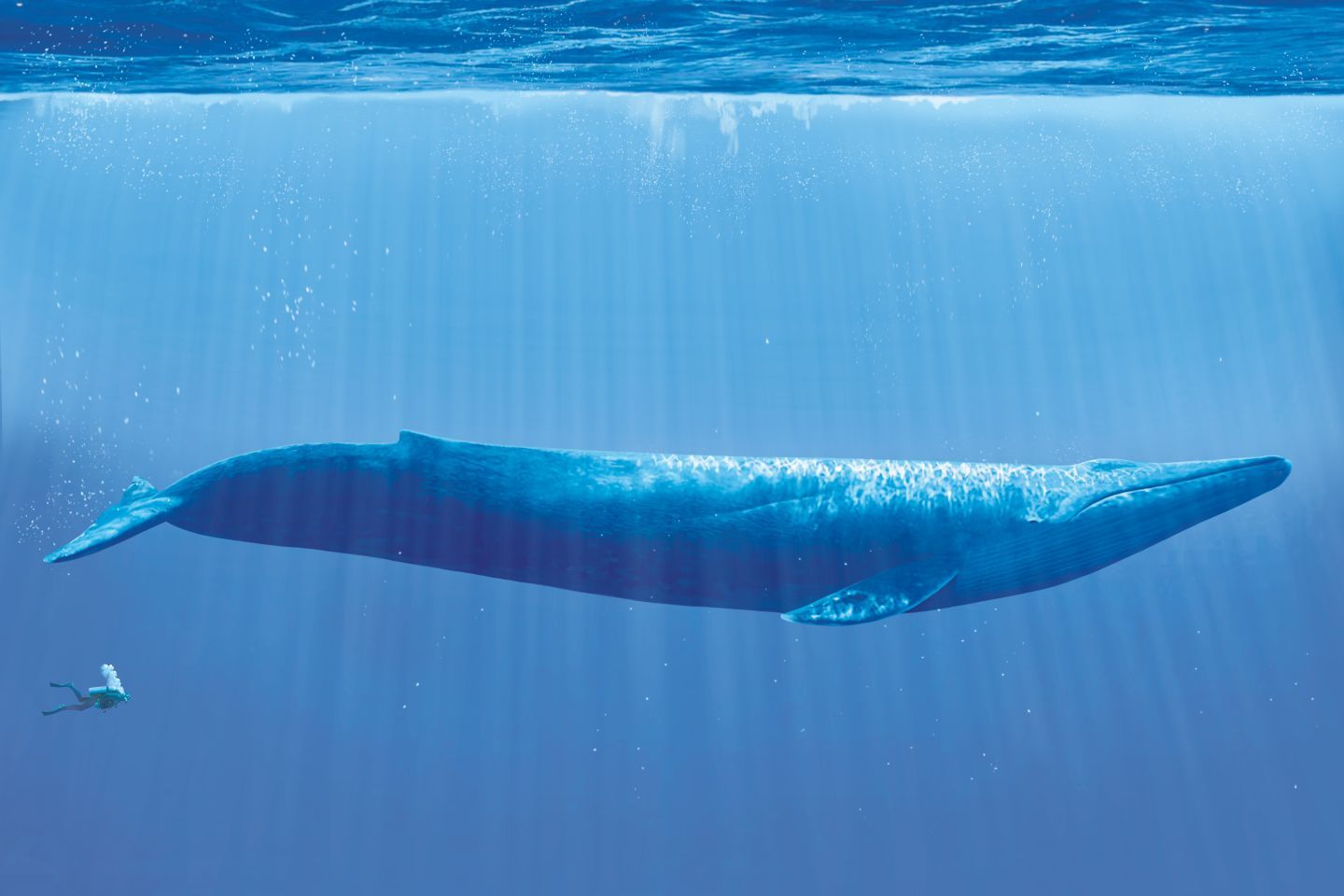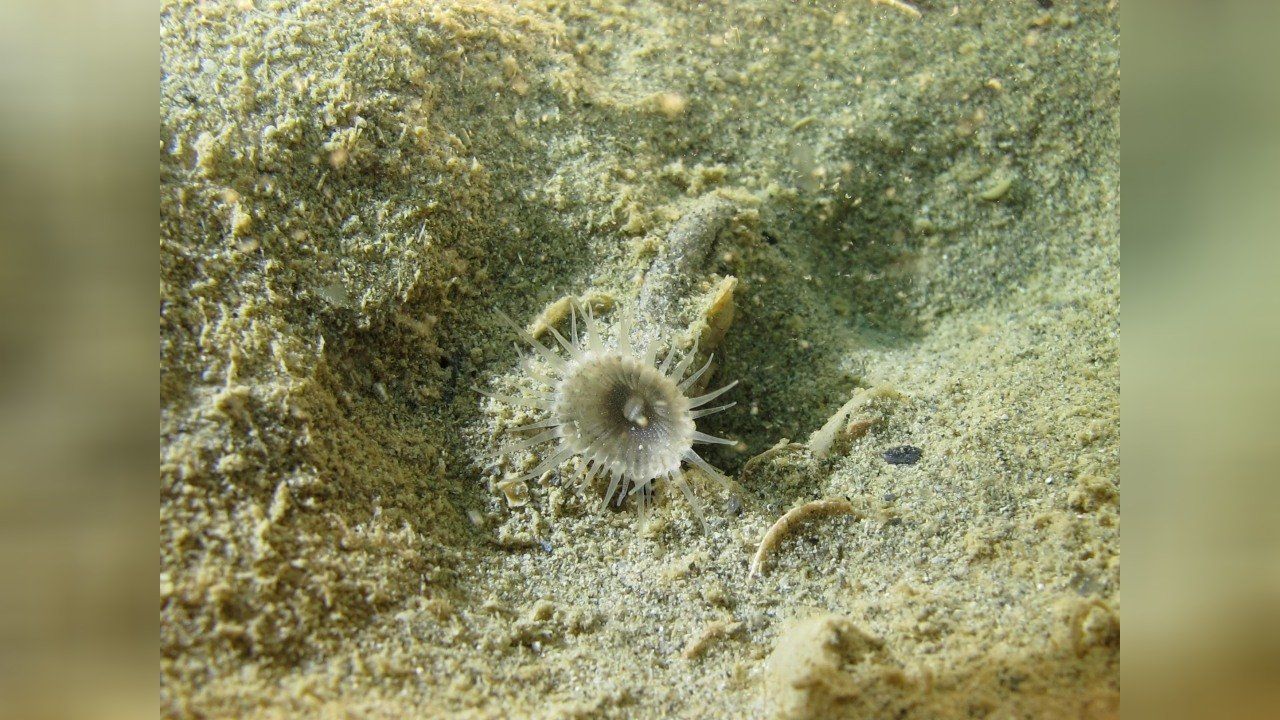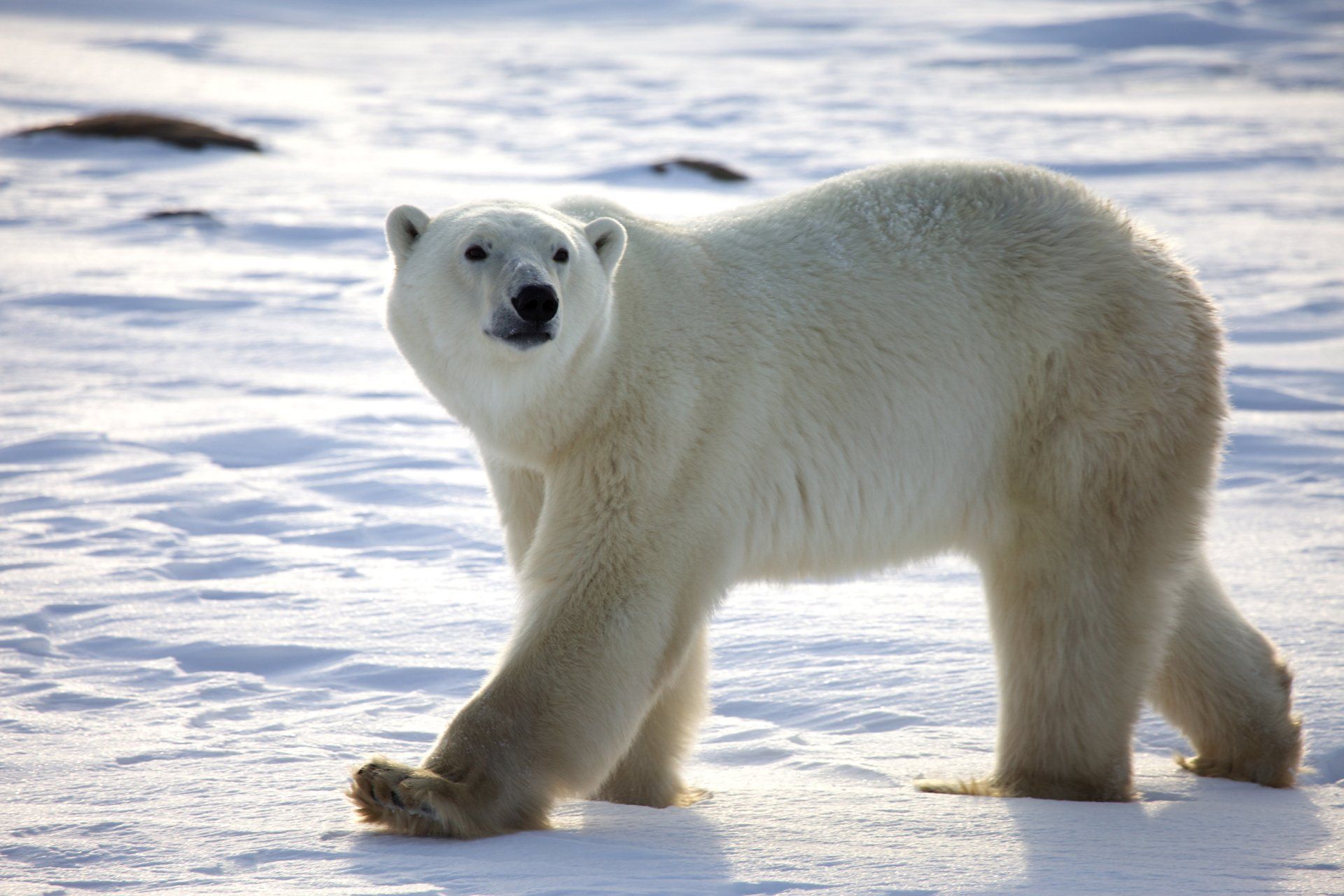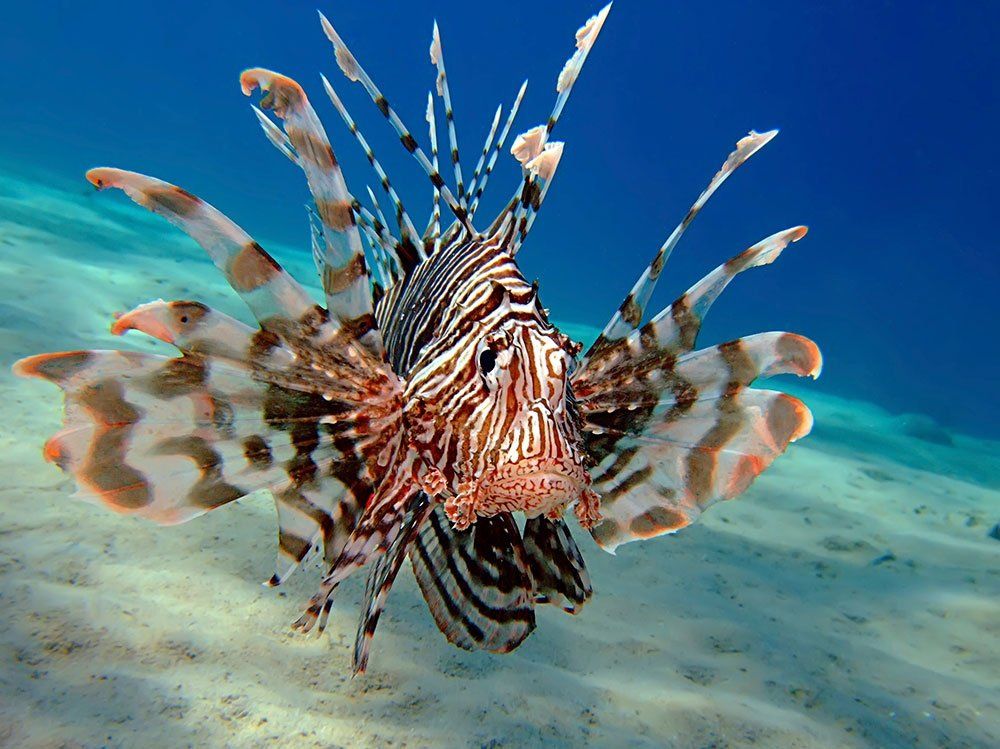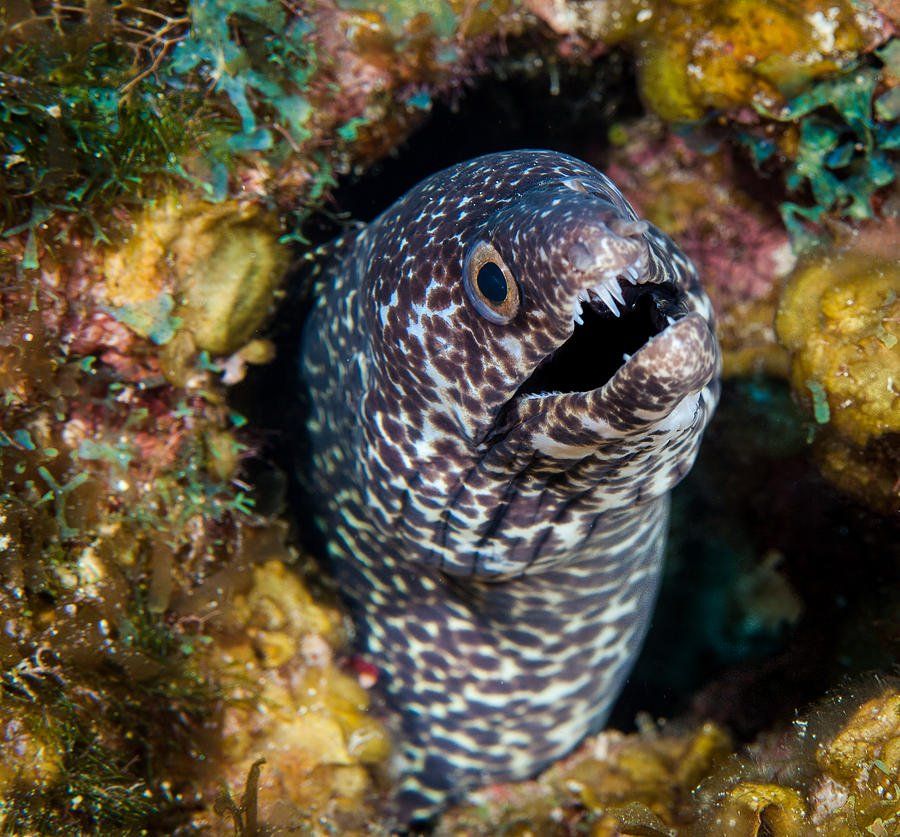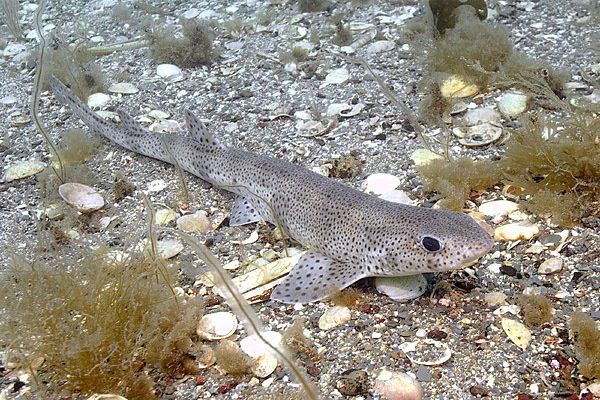Marine Animals that are Pro's at Social Distancing and Self Isolating!
During this uncertain time, when the world is self isolating and social distancing, we wanted to highlight 10 marine species that are pro's at doing just that. From invertebrates to the largest animals on Earth, here are 10 marine species that are great at global pandemics. So jump in and brighten up your day with some relatable marine wildlife.
1. A solitary colonel sea anemone. "Hide and Seek"
Generally colonel sea anemones are found in colonies, hence the name, but recently researchers from Kagoshima University stumbled upon a rare find when they discovered a new marine species of zoantharian, buried almost completely in the soft sediment of the seafloor in Japan. This solitary individual polyp was barely visible with only its oral discs and tentacles protruding above the sediment surface. Zoantharians which are generally found in large colonies are found on coral reefs in shallow tropical and subtropical oceans. The new species Sphenopus exilis is much smaller than the two other previously known species of solitary zoanthians. The new species is only found in two bays on the east coast of Okinawa Island, both of which are threatened with development, with one being the centre of controversy over a proposed American military base and landfill.
2. Polar bears " Don't touch my food"
Polar bears ( Ursus maritimus ) are known to live most of their lives alone in isolation, perhaps a reflection of the limited available resources, i.e. food. Beside brief encounters with other polar bears for mating and raring their cubs, they live and hunt alone. Therefore only two social units exist for polar bears; adult females and her young, and breeding pairs. The longest duration polar bears are known to live together is while a mother is bringing up her young, generally for no longer than 3 years. This is the most constant social interaction as polar bear mothers are very attentive, frequently touching and grooming their cubs. Polar bear breeding pairs remain together for one week or more, marine several times. Therefore, an individual polar bears solitary lifestyle makes social encounters extremely uncommon. Given a polar bears size and strength, interactions between bears that do meet in the wild can be very dangerous and potentially deadly. One exception of polar bears being anti-social include when a few individuals may aggregate to feed on the carcass of a large whale. In some areas, such as Hudson Bay, bears aggregate on land in ice-free summer and autumn months when they are waiting for the ice to return. On occasion, subadult and adult males (ages 30 months to 5 or 6 years) will travel and hunt together for short periods of time.
3. Sea Turtles "Just chilling "
Sea turtles such as the Green sea turtle ( Chelonia mydas ), the loggerhead sea turtle ( Caretta caretta ) and the leatherback sea turtles ( Dermochelys coriacea ), undergo massive migrations and are generally solitary marine species, again only coming together to mate and also to nest on beaches. However, most of the time, these animals are happy to be left alone. From the moment they hatch from their eggs in the nest on the beach their mother carefully made, they are on their own against predators such as seabirds, foxes and wild dogs which may try and eat them on their first journey to the sea. These marine reptiles remain alone as they make their arduous journey to and from feeding grounds.
4. Lion fish "Remain at a safe distance"
Lionfish ( Pterois ) may be beautiful to look at but they aren't a fan of hugs. As you might be able to tell from looking at them, lion fish are armed with poisonous spines and fins that help keep the fish safe from trespassers and predators that may venture too close. For the majority of their adult lives, lion fish are solitary, often found lurking in quiet areas of reefs or a wreck. These fish can be very aggressive and will fiercely defend their home range against both the same and different species, using their poisonous dorsal spine. Males are more aggressive than females. As their name suggests they are a fearsome predator, hunting mostly in the night. Due to their diurnal hunting strategy they have a ferocious appetite and must eat a lot. When the sun comes up, they retreat to their shadowy homes among the corals, rocks and overhangs.
5. Beaked whales "you no nothing John Snow"
Andrew's beaked whale ( Mesoplodon bowdoini ) is one the poorest known whale species on the planet with only one live animal ever seen at sea in 2008 and other than that it is only known from stranded specimens from the waters of New Zealand. Andrew's beaked whale has been described as a solitary beaked whale species whose social interactions are limited to only a short period of time for coupling and mating. Other than mating and calving season during New Zealand's summer and autumn months, they remain solitary, diving to great depths in search of their prey, squid and octopus. It is thought that family pods of no more than six individuals are likely.
6. Cephalopods "live fast and die young"
Most cephalopods (octopus and squids) are solitary marine animals with the exception of few squid species. Besides the rare exceptions, cephalopods like to live alone and may even engage in cannibalising each other if two of them meet. Even squid that do swim in groups, don't form the social bonds that other marine species do, like dolphins and porpoise. Most cephalopods have a short lifespan often not living past two years and many die after their first bout of reproduction.
7. Marine eels "Its a Moray"
Marine eels are found in tropical and temperate oceans around the world. Some eels, such as Moray eels live a solitary lifestyle, taking refuge and isolating themselves in small holes within the reef. Globally solitary moray els include over 200 species, with approx. 150 species within the Indo-Pacific from the intertidal zone to +200 meters depth. Spotted moray eels ( Gymothorax moringa ) are a shy species that is often found hiding in rocks due to their poor swimming ability. These are also nocturnal marine animals, often seen in the dark or at twilight hunting prey along the reefs.
8. Basking sharks "Family time"
Basking sharks ( Cetnorhynhus maximus ) are the second largest living fish on the planet. These pre-historic looking shark species are also usually lone travellers, often swimming in solitary in the winter months. However, they are not always alone and new research has revealed that basking sharks travel to their favourite feeding patches with their relatives to feed on plankton together. Basking sharks are known to be gather in large numbers in the spring in Irish and Scottish waters.
9. Small spotted cat sharks "Each to their own"
Small spotted catsharks ( Scyliorhinus canicula ), commonly known as dogfish, have recently been discovered to be either social or solitary, depending on their personality. Research conducted at the Marine Biological Association of the U.K., in Plymouth, in collaboration with the University of Exeter published these findings in the journal of Behavioural Ecology and Sociobiology. The results indicated that individual sharks that tended to form large social groups, continued to do so no matter what the experimental situation, where as anti-social sharks remained on their own or in much smaller groups. The results appeared to be driven by individual social preferences that appeared to reflect different strategies for staying safe. They even showed that some sharks had best friends, hanging out with the same individual on different days.
10. Blue whales "Can you hear me?"
Blue whales ( Balaenoptera musculus ) are one of the most solitary whale species, with the exception of mothers and calves. Calves enter the world at a whopping 3 tons and 25 ft, already ranking among some of the largest animals on Earth. Other than mother calf bonds, blue whales have no well defined social structure and are generally found alone or in small groups. They are sometimes known to gather in spread out groups to feed in an area of highly productive ocean but generally they are alone. Little is known about blue whale breeding pairs, besides that a male typically trails a female and can repel an intruder male after a short yet highly vigorous battle. The blue whale is the largest animal to have ever lived on Earth and use loud sounds to communicate to each other along their migration routes across ocean basins. Blue whales produce a variety of sounds, particularly during the breeding season in winter, including hums, squeaks, and rumbles to communicate. Blue whale communicate at incredibly loud levels, up to 180 decibels.
© Ocean Research & Conservation Ireland (ORCireland) and www.orcireland.ie , est. 2017. If you like our blogs on the latest news in marine science and would like to support our work, visit www.orcireland.ie to become a member, to volunteer or to make a donation today.
SHARE THIS ARTICLE






